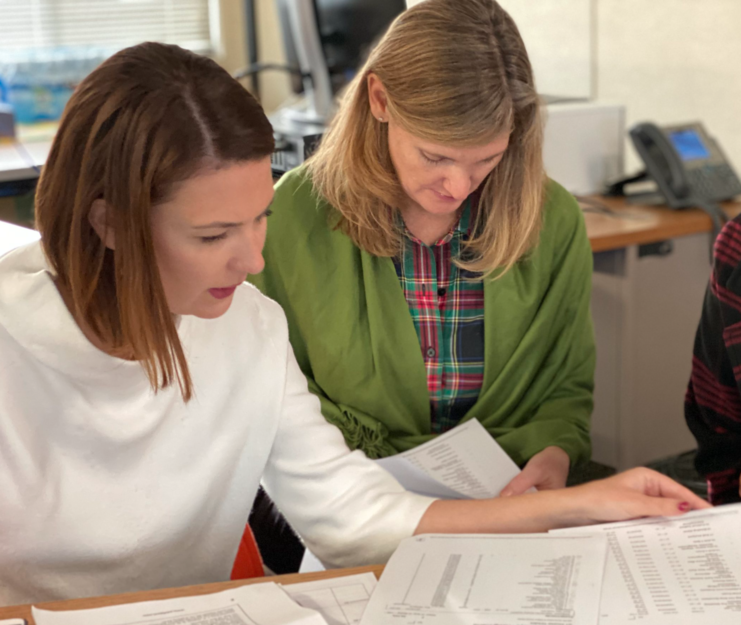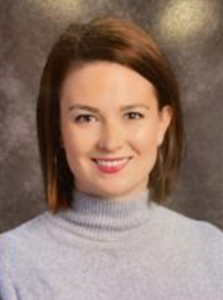
Building a Common Understanding to Support Students
I have had the privilege of serving as the principal of De Anza High School for the past five years. De Anza is an incredibly diverse urban high school in Richmond, California. Our staff has made huge gains in college access for our students. However, the staff is painfully aware that college eligibility is just the beginning. We have been on a journey to make sure that our students experience truly rigorous academics in high school so that they can confidently and successfully engage in university-level coursework. Each year, we have written school-wide inquiries and explored them together. This year, the secondary principals worked with Lead by Learning in monthly Community of Practice sessions, which meant that, in addition to engaging in inquiry with my staff, I was able to engage in the inquiry with the Lead by Learning partners and other principals throughout the district. I found the process invigorating and educational. During each Community of Practice session, I made new discoveries that I could share with my team at school. The parallel nature of exploring De Anza’s inquiry at a district level and at a site level was enlightening. It helped me dig deeper into the inquiry with my staff, and helped the De Anza staff as a whole better serve both our teachers and students.
The essential question that De Anza staff set out to explore was, “How do we work to build collective resilience in our students as we pursue rigorous learning together?” We felt strongly that students must have access to rigorous programming in order to create equitable outcomes. Frequently, we’d seen rigor positioned as opposing strong social emotional supports, and we wanted to make sure that social emotional tools were used to support students in engaging in critical thinking. To that end, we spent four days in August discussing readings by Zaretta Hammond and Claude Steele. Our readings explored both stereotype threat as well as the concept of being a “warm demander.” We used these theoretical frames to back co-planning around how to demand rigorous outcomes while using social emotional tools to build resilience. It felt good, and the staff was fired up to start the year!
During my first meeting with Lead by Learning, we explored the steps the staff had taken as well as my hypothesis around teacher limitations in creating truly rigorous classrooms. I hypothesized that while teachers were committed to implementing rigorous instruction, our school didn’t offer frequent avenues for feedback regarding what was taking place in the classrooms. I wasn’t convinced that teachers got constructive feedback or felt any accountability to implement learnings from staff collaboration. I wondered if a lack of informal accountability was hindering progress. I shared these wonderings during the first Principal Community of Practice session using Lead by Learning’s Public Learning protocol. Between my work with our Lead by Learning partner and the feedback from my peers, it was clear that I needed baseline data. To that end, I worked with the De Anza Assistant Principals to create an electronic feedback tool that collected our walk-thru notes and sent the feedback to the teachers in an e-mail. Our focus on data collection was around the Depth of Knowledge (DOK) that we saw in the classrooms. We were eager to collect baseline data and to feel accountability as an admin team to go into classrooms more frequently.
The data showed much of what we expected; eighty percent of classroom instruction was living in DOK 1 & 2. The teachers on the Instructional Leadership Team (ILT) were averaging more time in DOK 2 & 3. In general, teachers were receptive to receiving feedback about the lessons. During this period of data collection, there was another Principal Community of Practice session and during one of the “sharing protocols” the Lead by Learning partner consistently asked another principal and I how we knew what our teachers really understood about Depth of Knowledge. It was an excellent question; I couldn’t directly answer it. I knew how our meetings felt, I knew that our teachers were eager to learn, I even knew that we had a common staff definition of rigor – but I couldn’t confirm that teachers knew what a rigorous assignment or task was in their classroom. Back on campus, I asked the ILT if they could match skills-based objectives and tasks to a DOK chart. They felt uncertain and we all felt that a common understanding of DOK needed to be our next point of focus.
The ILT planned a PD where the staff was asked to match objectives and tasks to a DOK chart. We emphasized repeatedly that rigor was not the same as quantity of work. Grade level assignments are important, but we were looking for the depth of thinking required of students! During this session, misconceptions became very apparent. Teachers made statements such as, “Algebra 1 is DOK 1 and Geometry is DOK 2.” Or, worse, “My DOK 1 students…” However, because the misconceptions were revealed we were able to correct them. We worked with the Department Chairs around how to support their teams as they co-planned. When I attended the monthly Principal Community of Practice session facilitated by Lead by Learning, I realized that I had been laser-focused on tracking DOK in classrooms. I was collecting evidence around both what teachers understood and were able to implement. I was investigating teacher understandings the way great teachers investigate student understandings. I realized I have always been good at sticking to plans, and that the De Anza staff in general is enthusiastic and “high will.” The teachers would try to implement any plan endorsed by the ILT. However, they may not call out or even know which pieces of the plan they didn’t understand. Our common understandings within the plan became the foundation and guided our ability to move student achievement together. My work with Lead by Learning as well as my colleagues helped me to remember this key value no matter how many distractions I encountered. Each time I left my principal learning space, I had new ideas around how to investigate my teachers’ understanding so that I could meet their professional needs to better support students.
In early March, we ran another workshop around matching objectives and tasks to DOK. The variation was that teachers had to audit their own gradebooks to see how frequently they were assigning level DOK 1, 2, or 3 work as well as if the assignments matched the intended lesson objectives. The adults in the room were thoughtful and studious. Teachers reflected and pushed each other and even debated what level the different tasks were. Most importantly, they demonstrated that they understood the importance of the DOK levels in their planning and the belief that any student can access critical thinking. The misnomers of the fall were gone, and the teachers were excited to work together to edit their plans. What I heard in this room matched what I had seen in classrooms. During my second semester classroom walks, I saw DOK 1 lessons half as frequently and DOK 3 lessons twice as frequently as I had during the first semester!
I began the year with the hypothesis that more frequent feedback would help teachers to “up the rigor”. Through my cycle of inquiry, I found that the impediment to implementation with our high-will staff was not lack of feedback, but it was lack of common understanding. The feedback wasn’t useful before we built a common understanding. I now visit classrooms with a lens on understanding what the teacher knows and can demonstrate. This seemingly small mindset shift has had a huge impact on my ability to effectively support instruction at De Anza.
Once the staff shared common understandings, we were able to move together in helping students to participate in constructing rigorous classrooms.
In turn, that made the feedback given on walk-thrus more valuable, and allowed teachers to understand how to implement instructional strategies to “up the rigor.” As my approach shifted, there was more clarity around what the ILT and admin teams wanted the staff to “know.” The “know how” of the staff lead to more equitable outcomes.
My participation in Lead by Learning’s practice of Public Learning with my colleagues and our partners at Lead by Learning helped me to view my own learning as a process of discovery. More importantly, it helped me to think through how to explore those “discoveries” with my staff. As administrators, we often have epiphanies but we are bombarded with fifty other urgent tasks before we can think them through and put anything into practice. The Lead by Learning Public Learning protocol and collaborative model were critical to helping me think-through ideas. The Lead by Learning frameworks provided a flexible space for my colleagues and me to get curious and spend time exploring ideas about teacher learning on a monthly basis. They also provided enough structure to help us continue to stay focused on action steps and implementation. Through my professional learning this year I was able to get curious and investigate the knowledge of my staff. In short, I was able to do the same thing with my staff that great teachers do with their students; and model that a commitment to learning is critical at every level of our school!
 Summerlynn Sigler has been the Principal of De Anza High School for the past 6 years. Prior, she was an assistant principal at Richmond High. In addition to supporting learning of her Instructional Leadership Team she is also a design partner and supports principal Learning at her district. When she is not leading, Summer enjoys cooking, traveling, and spending time with her family and dog!
Summerlynn Sigler has been the Principal of De Anza High School for the past 6 years. Prior, she was an assistant principal at Richmond High. In addition to supporting learning of her Instructional Leadership Team she is also a design partner and supports principal Learning at her district. When she is not leading, Summer enjoys cooking, traveling, and spending time with her family and dog!
